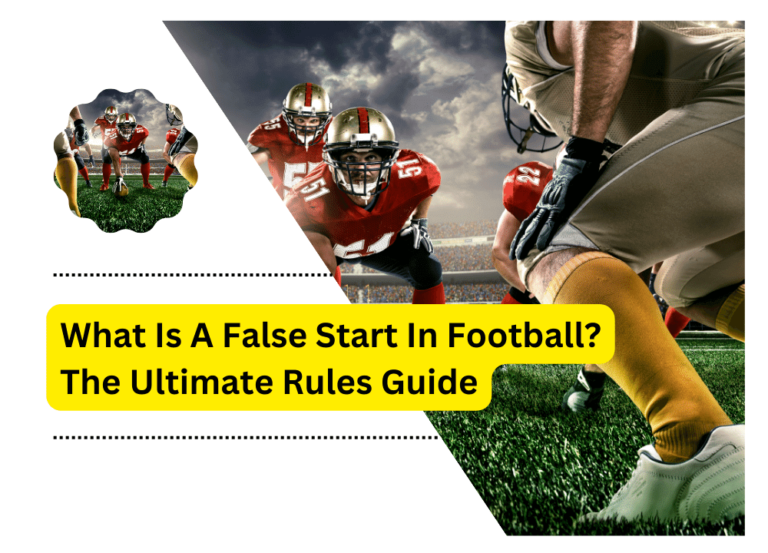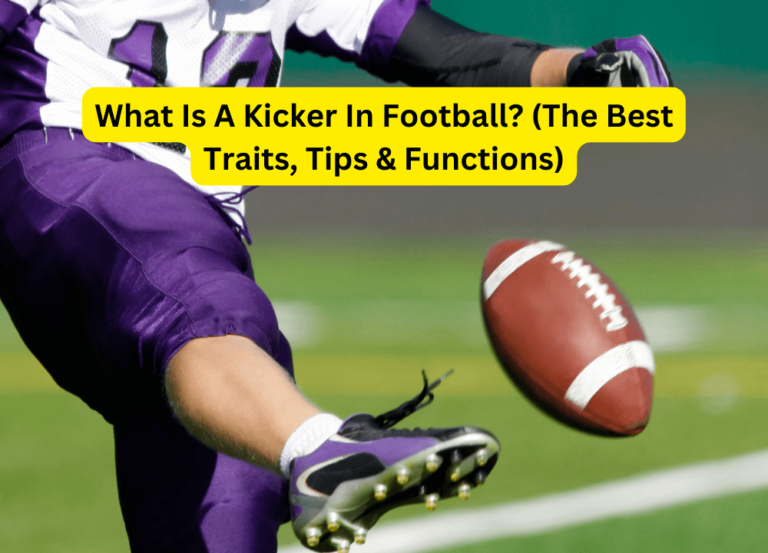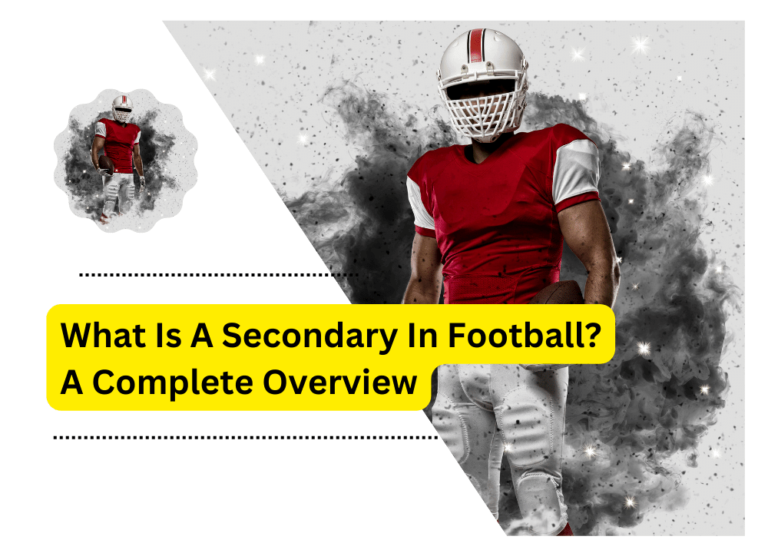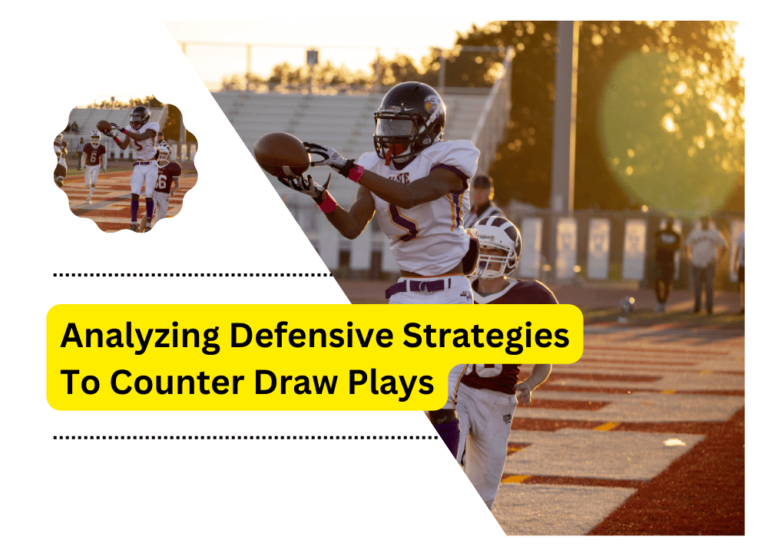What Is A Defensive End In Football & How They Impact Matches

Are you ready to dive into the exhilarating world of football? We’re about to unveil the unsung heroes who possess the power to turn a game on its head – the mighty defensive ends.
These extraordinary athletes, with their lightning-fast agility and bone-crushing strength, have mastered the art of disrupting opponents’ plans and altering the course of matches.
Join us as we explore What a Defensive End in Football game-changers shape the outcome of football battles, inspiring awe and admiration with every tackle, sack, and fumble recovery. Get ready to witness unparalleled athleticism in action – it’s time to meet the geniuses behind defensive domination!
How Defensive Ends Impact the Outline of a Football Game?
Defensive ends play a critical role in the success of a football team. They are responsible for disrupting the offensive line, creating negative plays and sacks, and keeping the quarterback under pressure. The defensive end position is one of the most demanding in football and requires a lot of athleticism, strength, and versatility.
This is why it is so important to have quality defensive ends on your roster. They can make or break a game by impacting the outcome in different ways. Here are three ways defensive ends impact the outline of a football game:
1) Sacks:
A defensive end who can get to the quarterback quickly and create havoc will disrupt his rhythm and cause him to make mistakes. This leads to more sacks, which ultimately leads to more points allowed by the opposing team.
2) Negative Plays:
Defensive ends who can rush the passer effectively force turnovers that lead to quick scores for their team. They also cause havoc in the backfield, which allows linebackers and secondary players to make plays on defense.
3) Route Running:
Defensive ends need good footwork in order to get around offensive linemen and create separation from receivers. If they can do this consistently, it will keep quarterbacks off balance and allow defenders to make big tackles on running plays or interceptions
Types of Defensive Ends
There are many different types of football positions in the NFL, which can impact the outcome of football matches. Here are four of the most important:
1. Pass Rusher:
A pass rusher is a player who specializes in pressuring the opposing quarterback. They use their speed and strength to get around offensive linemen and sack the quarterback.
2. 3-4 Defensive End:
A 3-4 defensive end is traditionally a big, strong player who lines up on the outside of the defense. They are responsible for stopping the run and defending against passing attacks.
3. 4-3 Defensive End:
A 4-3 defensive end is similar to a 3-4 defensive end, but they play inside instead of outside. They are responsible for stopping the run and blitzing off the edge to pressure the quarterback.
4. Nose Tackle:
A nose tackle is usually a big, physical player who lines up next to the center in order to protect against the run and control double teams on opposing guards.
How Do Defensive Ends Play?
Defensive ends are a crucial part of any football team. They are responsible for stopping the opposing offense from getting yards on the ground and putting points on the board. Defensive ends play a very important role in affecting the outcome of football matches.
There are many different types of defensive ends, but their roles remain largely similar. They need to be able to rush the passer and create pressure on the opposing quarterback. Defensive ends also need to be versatile enough to play in different positions on the field.
Some of the best defensive ends in the NFL have been able to do all of these things extremely well. They have been able to get past blockers and sack quarterbacks, as well as disrupt passing lanes. This has led to many successful football matches for their teams.
There are a number of factors that make a great defensive end. These players need strength and speed combination, as well as good hand-eye coordination. They also need to be able to read pass patterns and react quickly. If they can do all of these things well, then they will be effective defenders on the gridiron
Keys to Defeating a Defensive End
When it comes to defensive ends, their impact on the outcome of football matches can be dramatic. Offenses must account for these dynamic players when planning their plays, and defenses must use all available resources to keep them from damaging the opposing offense.
Here are three keys to defeating a defensive end:
1. Recognize the mismatch:
Defensive ends are typically stronger than other players at their position, so they can disrupt passing lanes and create turnovers.
When scouting an opposing defense, look for who is typically lining up next to the defensive end and identify his weaknesses.
Against a team with a weak offensive line, for example, look for opportunities to blitz this player or use coverage schemes that force him into one-on-one matchups.
2. Control the line of scrimmage:
Defensive ends are often tasked with penetrating the offensive line in order to make sacks or disrupt plays in the backfield. To prevent these disruptions, your defense must control the line of scrimmage and prevent opposing offenses from establishing any kind of rhythm.
This can be accomplished by using disciplined play in your gaps and stacking defenders against the opposing linemen pre-snap. It’s also important to keep an eye on running backs in pass protection – if they get too far downfield, your defensive end may have an easier time getting around them and making a tackle.
3. Disrupt timing and rhythm:
Defensive ends are skilled at disrupting timing and rhythm in offensive attacks by rushing the passer or disrupting routes on passing the ball.
FAQ’s
Defensive ends and tackles are two important positions in football. Defensive ends typically line up on the outside of the defensive line, while tackles tend to line up directly over offensive linemen.
Yes, a defensive end can also be called an edge defender. They are typically tasked with rushing the quarterback or disrupting plays outside the defensive line.
Yes, there are typically two defensive ends in a standard formation. They line up opposite each other on the outside of the defensive line. Their primary responsibility is to pressure the quarterback and disrupt passing plays, but they may also be tasked with stopping the run or rushing off the edge.
Final Thought
What is a Defensive End in Football is a vital part of any football team. They are the players who line up next to offensive linemen and attack the quarterback. Their job is to stop the opposing team from scoring, and they do this by using their speed and strength to knock down passes or force fumbles.
Defensive ends have a big impact on the outcome of football matches, so it’s important that you know who they are and what makes them so special. In this article, we have introduced you to some of the game-changers in this year’s defensive end crop. Read on to learn more about these athletes and how they will help your team win games.






